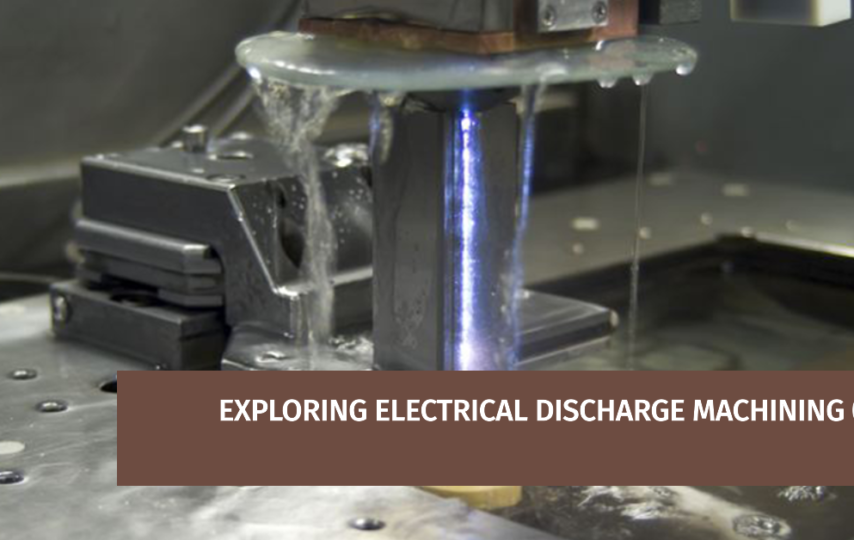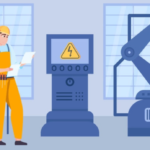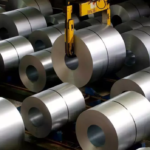Precision is the key to functionality in almost every manufacturing project. The only difference is that what degree of precision is necessary? Based on this question, you can choose the right manufacturing method to meet your precision level. In this context, Electrical Discharge Machining (EDM) has emerged as a cornerstone. Notably, it works on hard materials, which are materials difficult to machine with traditional methods like milling or turning.
Furthermore, we will explore its principles, types, applications, advantages, Wire EDM Quotes & Services, and other prospects.
What is Electrical Discharge Machining?
The EDM process utilizes electrical discharges. These discharges erode material from the workpiece. It occurs through a series of controlled electrical discharges. Meanwhile, discharges occur between an electrode (the tool) and the workpiece. Both are submerged in a dielectric fluid. The fluid acts as an electrical insulator until a certain voltage is reached. Once this threshold is crossed, it becomes an electrical conductor. Consequently, a spark is generated. This spark precisely removes material from the workpiece.
Moreover, there are two main types of electrical discharge machining:
1. Wire EDM
Wire EDM (wire-cut EDM or wire cutting) involves a thin wire used as the electrode. This wire moves through the workpiece. It cuts a path corresponding to the desired shape. Meanwhile, continuous feeding is essential in the process. It creates intricate and precise cuts, such as aerospace turbine components, automotive injector nozzles, intricate jewelry designs, and precision gears for watches.
more.
2. Sinker EDM
On the other hand, Sinker EDM uses a pre-shaped electrode. This electrode is a mirror of the desired shape. It’s gradually lowered into the workpiece. As it approaches, sparks remove material to form the cavity or shape dictated by the electrode. Sinker EDM is ideal for creating molds, dies, and intricate cavities in metals.
- Injection mold for smartphone cases
- Complex aerospace gear housings
- Dental implant molds
- Coining dies for minting
- Prototype development of microelectromechanical systems (MEMS)
Wire EDM Quotes & Services
These services refer to the solutions for precision cuts and shapes required for different applications, from simple patterns to complex molds. Next, the quotes are a detailed explanation of the overall cost of any EDM design.
The quoted price for EDM designs may differ on thickness, tolerance, material type, and design complexity. For example, EDM machining of hard titanium costs more than steel machining. Similarly, machining complex designs like casting mold cavities is way more expensive than creating a pattern on a metal bar.
But, what is the advantage of an EDM quote for you or any firm looking for EDM services? Well, they can get accurate pricing information before starting the project and analyze their business feasibility. Meanwhile, quotes also help to find the cost-competitive service provider.
Furthermore, China’s prototyping manufacturing is the most cost-effective if you are looking for any EDM-related services. Chinese EDM firms offer precise yet affordable EDM services regardless of geographical location.
The Advantages of Electrical Discharge Machining
Electrical Discharge Machining (EDM) offers numerous advantages in machining hard materials such as titanium or hardened steel.
- It can machine hard materials without risk of tool damage or workpiece deformation.
- EDM is compatible with almost every conductive metal and alloy.
- Complex geometries and patterns are possible with EDM.
- The accuracy it can achieve is as low as 0.0001 inch.
- The cuts are clean, smooth, and sharp as there is no physical contact between the cutting tool and the workpiece material.
What Are the EDM Applications?
The use of Electrical Discharge Machining is everywhere, from consumer goods to aerospace. The reason behind this is material options for EDM and its not-contact machining approach. Meanwhile, EDM also maintains the physical integrity of the final part and preserves the original properties.
Table: EDM Applications
| Industry | EDM Type | Typical Applications |
| Aerospace | Both Wire and Sinker | Turbine blades, engine components, cooling systems |
| Medical Devices | Sinker | Surgical instruments, implants |
| Automotive | Wire | Gear parts, engine components |
| Tool and Die | Sinker | Molds, dies, stamping tools |
| Electronics | Wire | Semiconductor parts, connectors |
Overall, EDM is capable of creating complex shapes from hard materials that other manufacturing method often fails to do. Its ability to shape materials with high accuracy has made it indispensable across industries.








